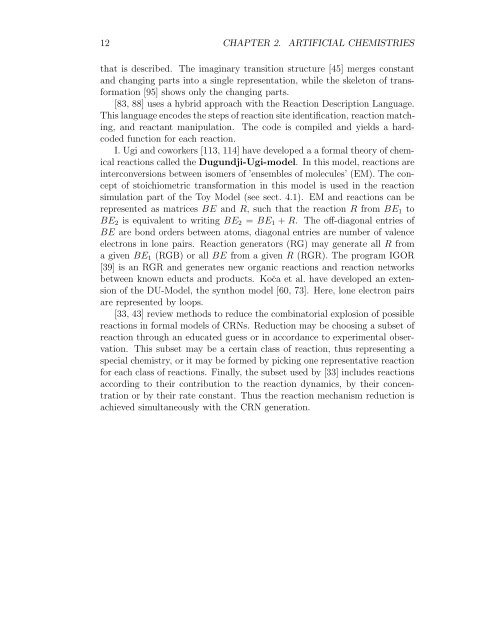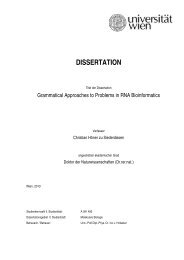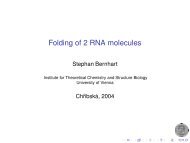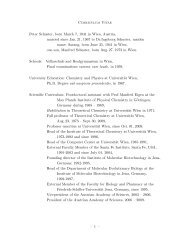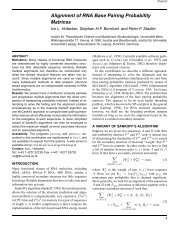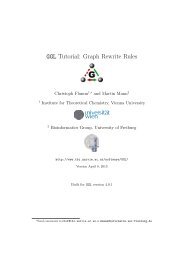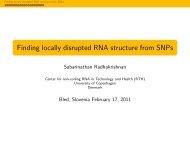A Toy Model of Chemical Reaction Networks - TBI - Universität Wien
A Toy Model of Chemical Reaction Networks - TBI - Universität Wien
A Toy Model of Chemical Reaction Networks - TBI - Universität Wien
You also want an ePaper? Increase the reach of your titles
YUMPU automatically turns print PDFs into web optimized ePapers that Google loves.
12 CHAPTER 2. ARTIFICIAL CHEMISTRIES<br />
that is described. The imaginary transition structure [45] merges constant<br />
and changing parts into a single representation, while the skeleton <strong>of</strong> transformation<br />
[95] shows only the changing parts.<br />
[83, 88] uses a hybrid approach with the <strong>Reaction</strong> Description Language.<br />
This language encodes the steps <strong>of</strong> reaction site identification, reaction matching,<br />
and reactant manipulation. The code is compiled and yields a hardcoded<br />
function for each reaction.<br />
I. Ugi and coworkers [113, 114] have developed a a formal theory <strong>of</strong> chemical<br />
reactions called the Dugundji-Ugi-model. In this model, reactions are<br />
interconversions between isomers <strong>of</strong> ’ensembles <strong>of</strong> molecules’ (EM). The concept<br />
<strong>of</strong> stoichiometric transformation in this model is used in the reaction<br />
simulation part <strong>of</strong> the <strong>Toy</strong> <strong>Model</strong> (see sect. 4.1). EM and reactions can be<br />
represented as matrices BE and R, such that the reaction R from BE 1 to<br />
BE 2 is equivalent to writing BE 2 = BE 1 + R. The <strong>of</strong>f-diagonal entries <strong>of</strong><br />
BE are bond orders between atoms, diagonal entries are number <strong>of</strong> valence<br />
electrons in lone pairs. <strong>Reaction</strong> generators (RG) may generate all R from<br />
a given BE 1 (RGB) or all BE from a given R (RGR). The program IGOR<br />
[39] is an RGR and generates new organic reactions and reaction networks<br />
between known educts and products. Koča et al. have developed an extension<br />
<strong>of</strong> the DU-<strong>Model</strong>, the synthon model [60, 73]. Here, lone electron pairs<br />
are represented by loops.<br />
[33, 43] review methods to reduce the combinatorial explosion <strong>of</strong> possible<br />
reactions in formal models <strong>of</strong> CRNs. Reduction may be choosing a subset <strong>of</strong><br />
reaction through an educated guess or in accordance to experimental observation.<br />
This subset may be a certain class <strong>of</strong> reaction, thus representing a<br />
special chemistry, or it may be formed by picking one representative reaction<br />
for each class <strong>of</strong> reactions. Finally, the subset used by [33] includes reactions<br />
according to their contribution to the reaction dynamics, by their concentration<br />
or by their rate constant. Thus the reaction mechanism reduction is<br />
achieved simultaneously with the CRN generation.


